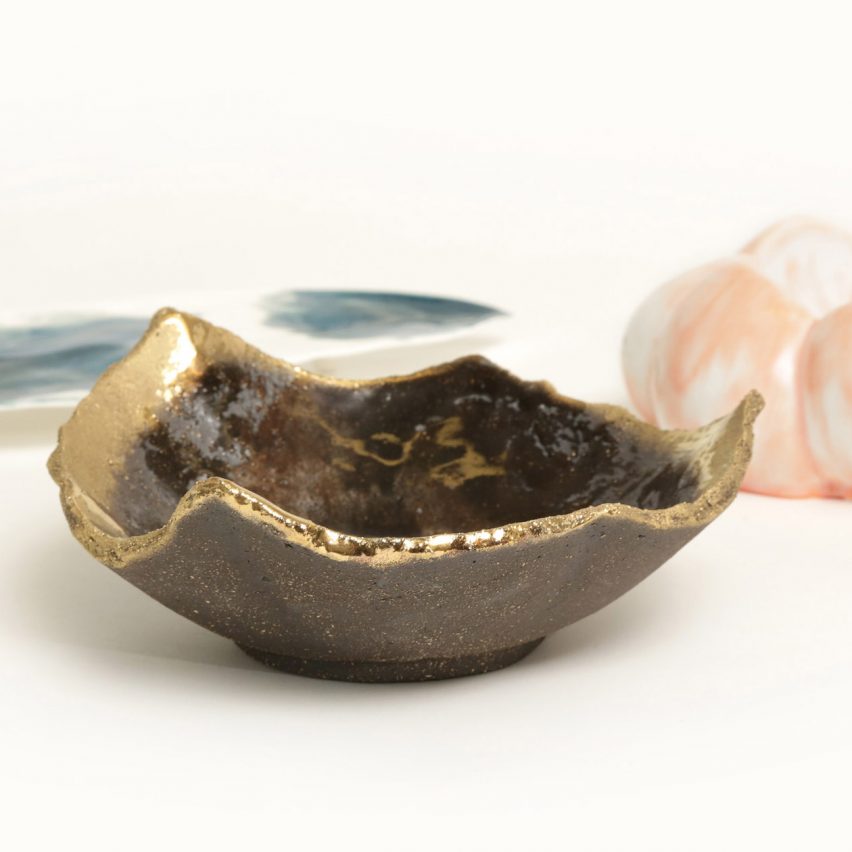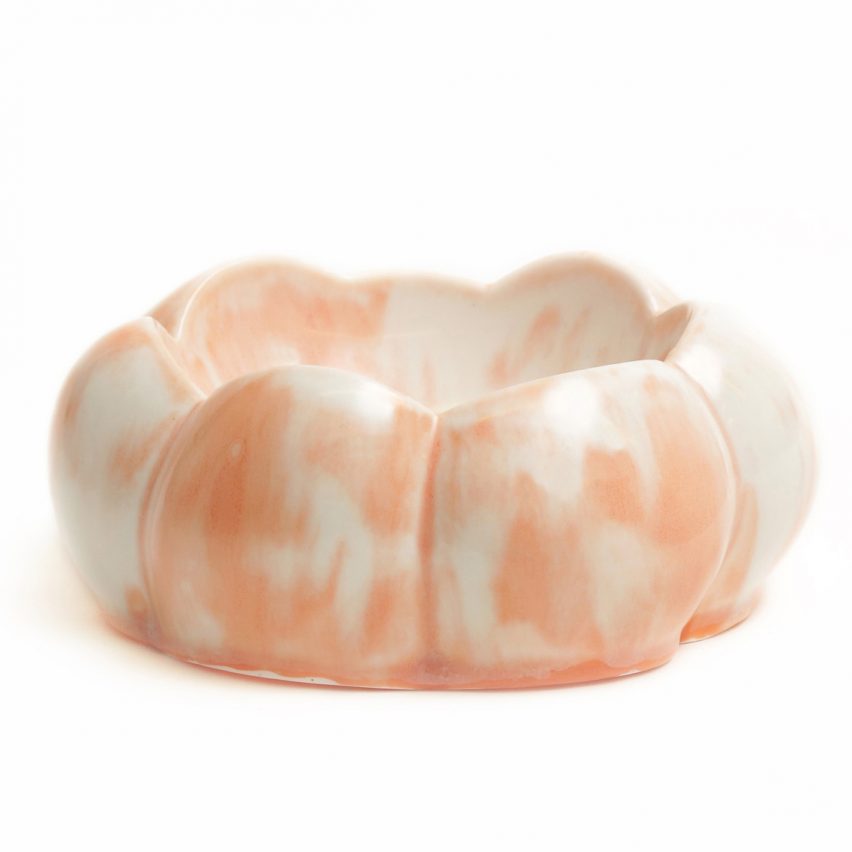
Ceramicist Reiko Kaneko creates flavour-boosting plate collection
Reiko Kaneko's plates for appliance manufacturer Neff explore how the colour, shape, texture and weight of crockery can intensify perceptions of flavour.
The collection, designed by Stoke-on-Trent-based ceramicist Kaneko, are based upon research carried out by Professor Charles Spence in the field of gastrophysics that shows how the feel of the crockery can trick the brain into experiencing a richer taste sensation.
Debuted at Eurocucina 2018, the limited edition set includes a starter plate, a main dish bowl and a desert bowl designed to heighten the taste of each stage of a meal.

Inspired by the sea, the fine bone china starter plate features white and blue glazing and bears a rough texture reminiscent of fish scales. It's designed to intensify the taste of seafood or fish based starters by heightening the perception of saltiness through its angular shape.
The angular main dish bowl is made from black stoneware with a rough, sandpaper-like texture designed to enhance the sensation of spiciness. For example, it can heighten the taste of ginger in a dish such as Thai green curry.
Based on the shape of a raspberry, the dessert bowl is designed to bring out the fruity flavour of sweet dishes. The pink colour boosts the perception of sweetness, while the outer, rounded, raspberry-like texture triggers associations with the fruit.

"Our brain plays tricks on us about what our taste buds are tasting," explained Professor Charles Spence.
"There have been experiments showing that eating popcorn from a blue bowl tastes saltier than from a white bowl. Similarly, when it comes to shape, an asymmetric, angular plate can bring out the sourness and acidity of food much more than a round plate does," he continued.
"Working with NEFF to apply some of these principles to plateware design has been a really interesting challenge and opportunity to see the gastrophysics insights used as inspiration for plateware design creation."

"Ever since I discovered Professor Charles Spence's work, I've been fascinated with the different dimensions that impact taste," said Kaneko.
"Playing with colour, shape and texture with the goal of ultimately influencing how diners will taste food has opened up a lot of creative avenues which are reflected in my designs."
Kaneko is not the first designer to explore the crossover between gastrophysics and design. In 2012, Design Academy Eindhoven graduate Jinhyun Jeon created this set of knobbly, bulbous and serrated cutlery to stimulate diners' full range of senses at the table.
Inspired by the phenomenon of synaesthesia, Jeon set out to discover whether the shape, texture and colour of cutlery could change the way food tastes.